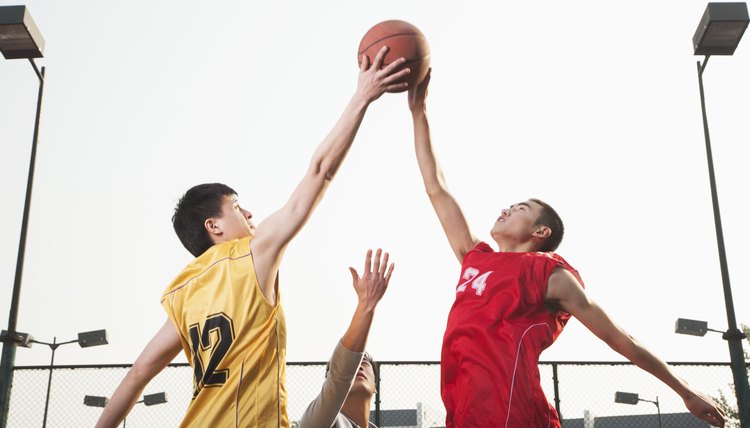How to Improve Court Vision in Basketball

Seeing the whole court can help anyone become a better basketball player. Drills both on the court and off the court can help train your eyes and your brain to pay more attention to what’s not directly in front of you. While increased practice won't give you x-ray vision, it will allow you to see and anticipate more opportunities to make plays.
The Basics
The more you practice with the same group of players, the better your court vision will be. When the members of your team move in predictable patterns, unexpected motions of opponents stand out. Keep your head up when dribbling and focus your eyes down the court, anticipating possible passes so you’re ready to get rid of the ball quickly. Practice your ballhandling skills so you’re comfortable with the ball against tight defenses and can concentrate on the rest of the court rather than your dribbling.
No-look Practice
Grab a basketball and a training partner or two, or, if you’re alone, find a setting with a wall that can return the ball to you. Look straight ahead, with your partner or the wall to one side. Practice passing the ball to your target on the side accurately, and catching the pass in return. While using a wall to send it back to you works in a pinch, including a training partner lets you know how accurate your passes are when you’re not staring directly at the target -- it makes a big difference whether you're hitting teammates with the ball in the chest or at their knees.
Defensive Drills
Court vision is a key part of the defensive side of the ball as well, so improvement here can increase steals, blocks and transition opportunities. In practice, post players can stare straight ahead and call out the identity of players coming to the basket, the better to recognize opposing plays and take advantage of shot-blocking opportunities. In rebounding drills, practice catching the ball, turning, and immediately releasing the ball to a teammate racing up the court to get used to recognizing offensive opportunities quickly.
Away From The Court
Even when practice is over, train your eyes to see what’s around you when you’re off the court. For example, hall of famer Bill Bradley practiced while walking down the sidewalk by concentrating on objects at the outer edge of his vision. That gets you used to noting objects that aren’t in front of you. Juggling also can train your brain to note where objects are when you’re not directly focused on each item.
